During the public vacation of May Day, also called International Workers’ Day, “For People, Food is the First Necessity: Qiu Zhijie’s Writing in a Market” was launched at the crowded Sanyuanli market in Beijing. The exhibition successfully aroused the enthusiasm of the public and it constituted an interesting contrast with the 16th Art Beijing 2021 which was located in the National Agricultural Exhibition Center that was two kilometers away from the Sanyuanli market. Where did this interesting feeling come from? Perhaps it was because it happened to hit a series of issues that art practitioners and the public have been concerned with recently, such as: What is the relation between art and life? How many possibilities are there for the connection between them? What on earth is art for?
As a follow-up report on “For People, Food is the First Necessity”, CAFA ART INFO offered a special invitation to Prof. Qiu Zhijie to respond to some controversies aroused by the exhibition.
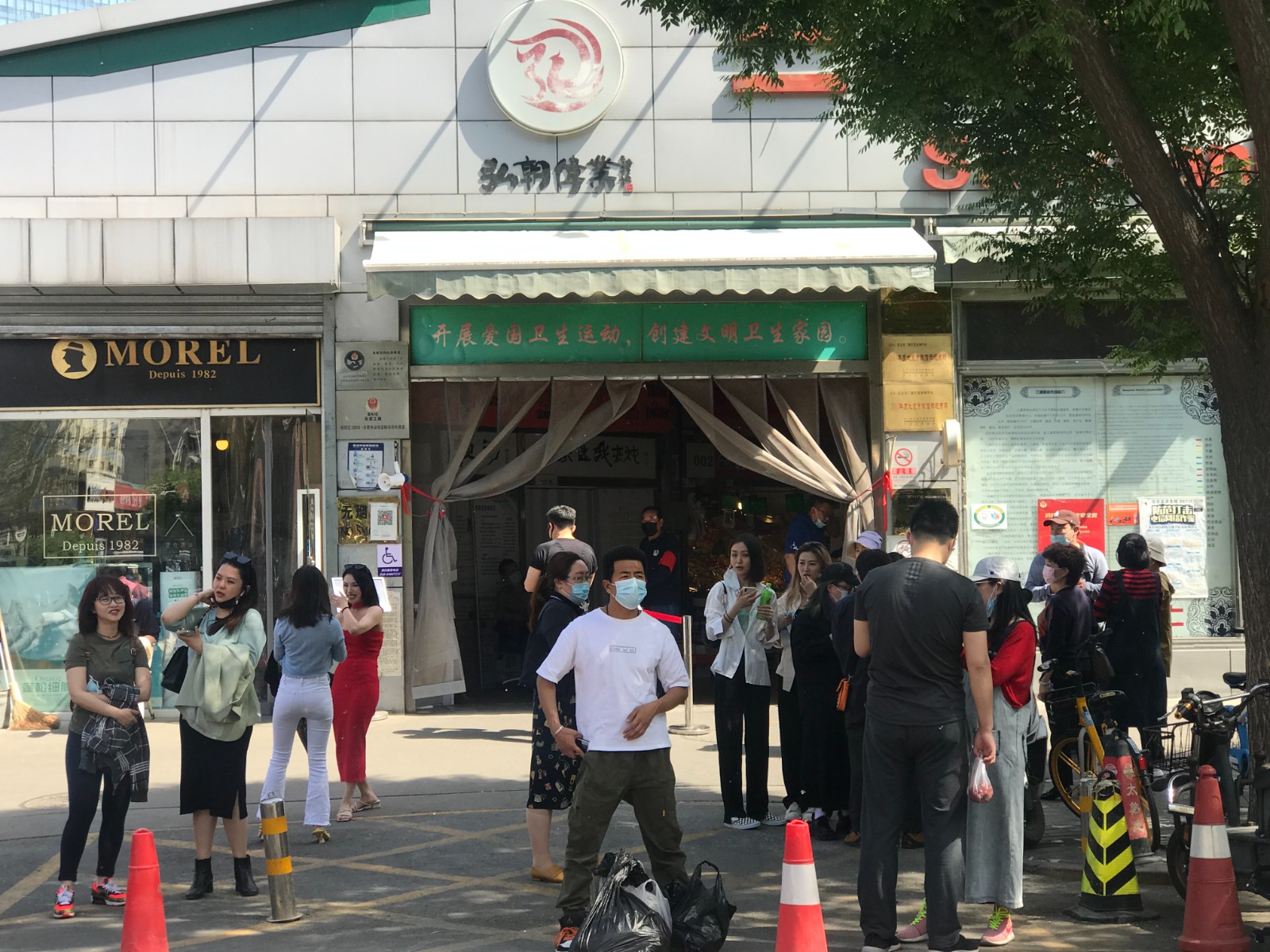

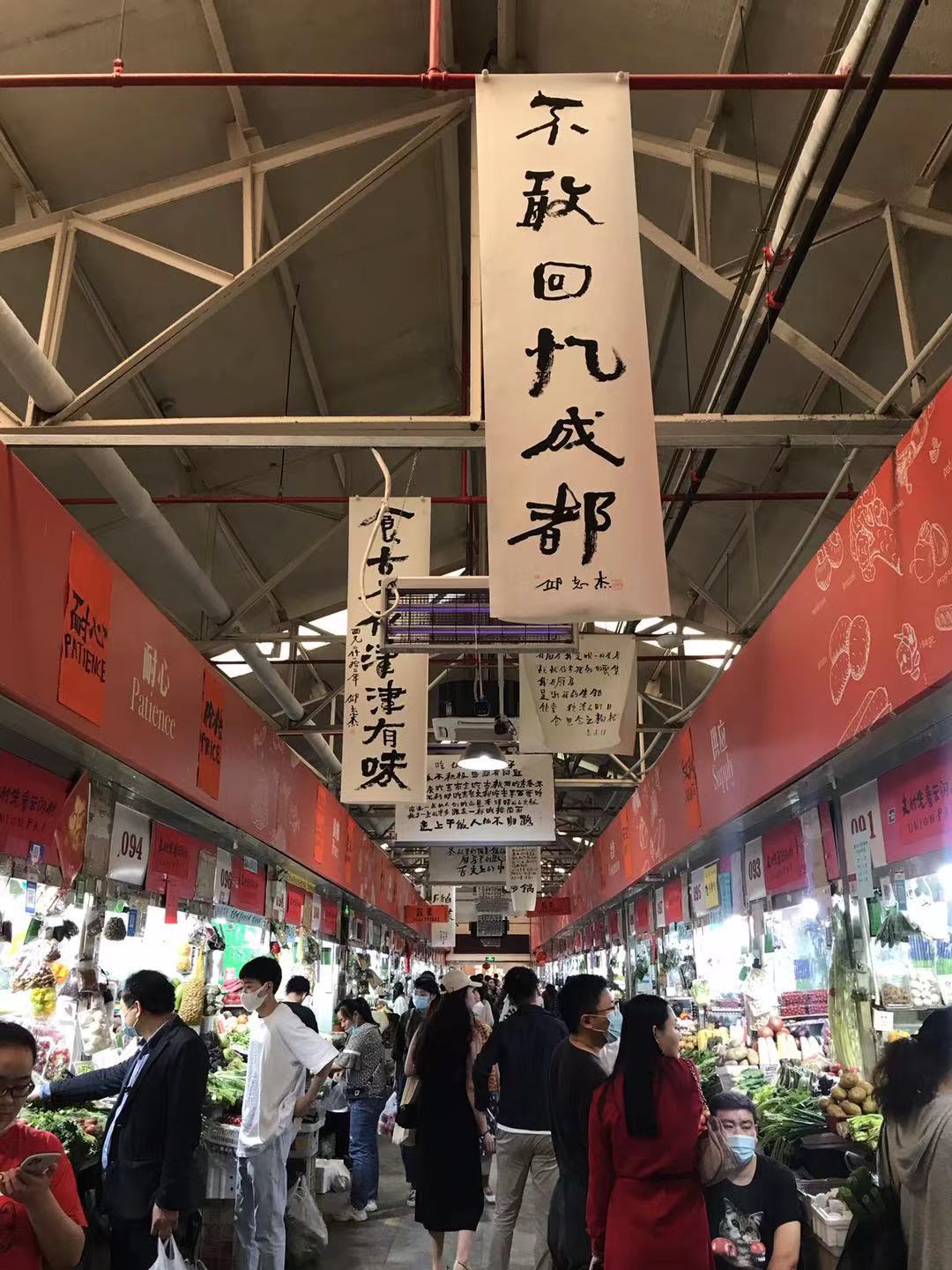
Exhibition View of “For People, Food is the First Necessity: Qiu Zhijie’s Writing in a Market”
CAFA ART INFO: You made an interesting comment on the exhibition, it “rode the wave” of life. Actually, the exhibition was so effective in terms of communication that it was even on the list of trending topics. During the preparations for this exhibition, had you predicted that it might be an “exhibition that attracts influencers”?
Qiu Zhijie: I did think that this exhibition might “become widely known”, after all the venue for the exhibition was special. It is a vegetable market that attracts influencers, and what I have written was quite interesting as they were not the ancient poems that were usually seen in calligraphy exhibitions, there were a lot of vernacular, slang, colloquialisms and internet buzzwords. We guessed that it might go viral on WeChat. But I did not expect it to be an exhibition “that attracted influencers.” Such a large-scale discussion greatly exceeded my expectation.
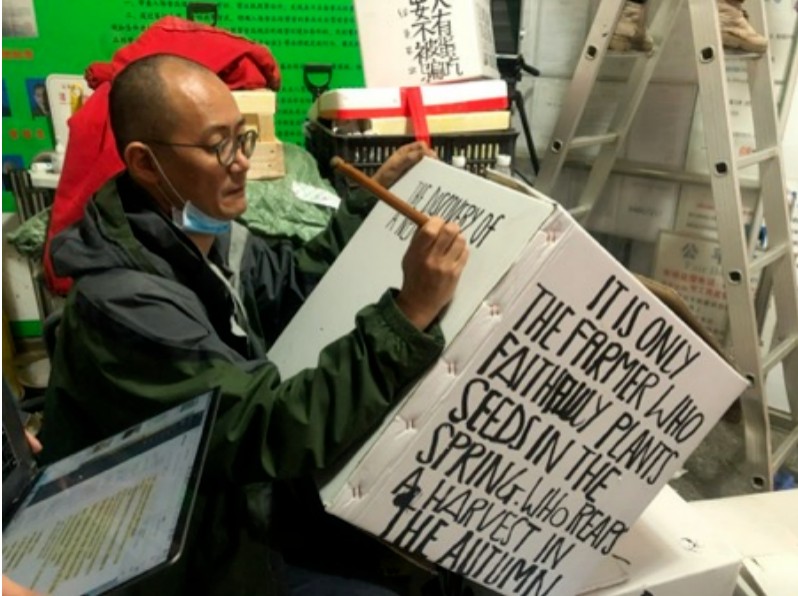
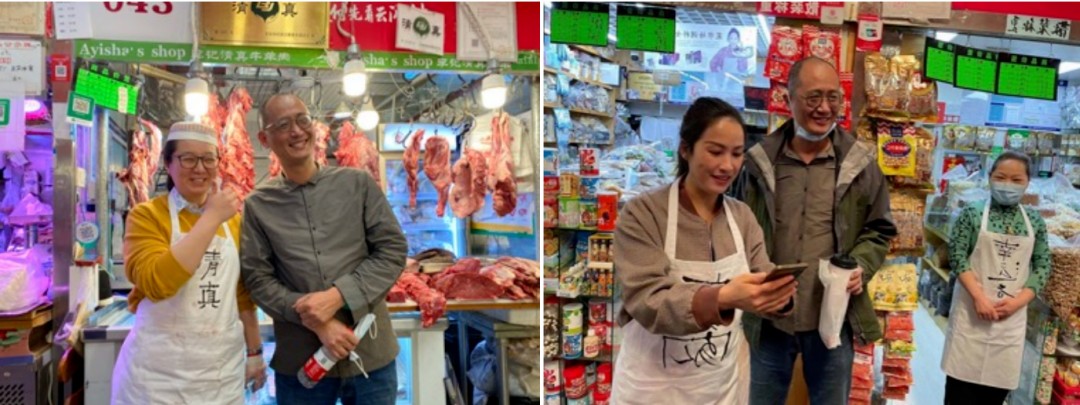
Qiu Zhijie became friends with stall-keepers at Sanyuanli Market through this exhibition
The exhibition did not just attract attention from young influencers, but it also received in-depth research and interviews from journalists. I was interviewed by ThePaper.cn, and the journalist paid a great deal of attention to the influence that had arisen after the disappearance of vegetable markets from both social and psychological aspects, which actually discussed the relation between globalization and local characteristics. What China News Service was concerned with was, how to conduct a cultural promotion by forming a dialogue with the world.
I chose to present this exhibition for it was a choice made by me from the basis of my long-term comprehension of writing. From the very beginning when the curator came to me and suggested an exhibition related to calligraphy, I said that I did not want an exhibition, and that it would not be presented in a museum.
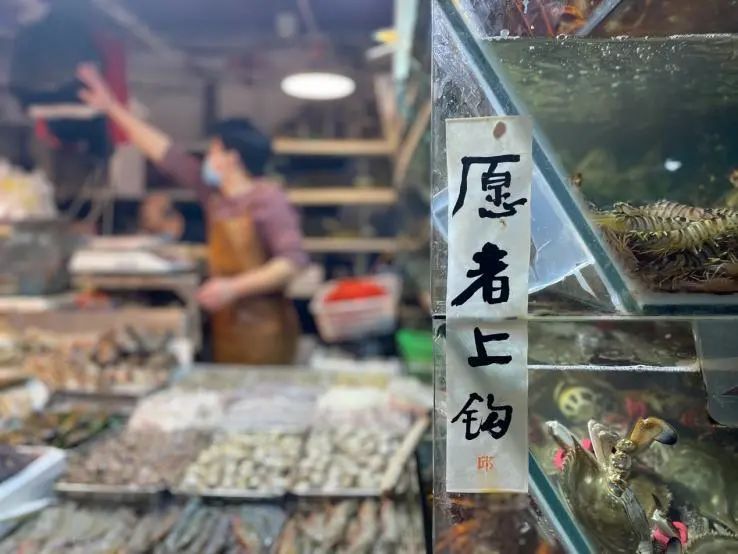
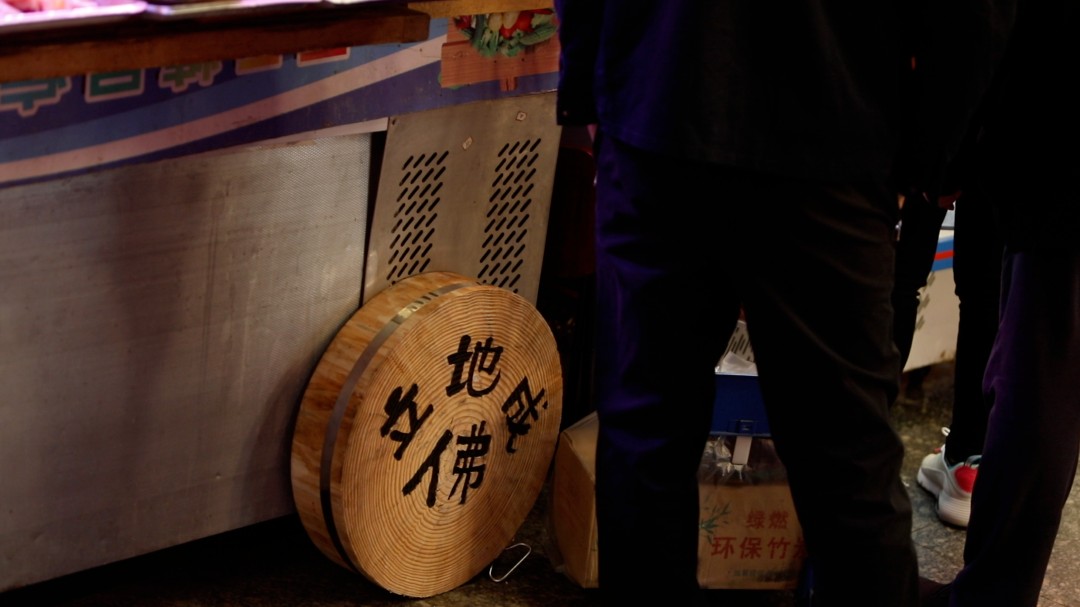
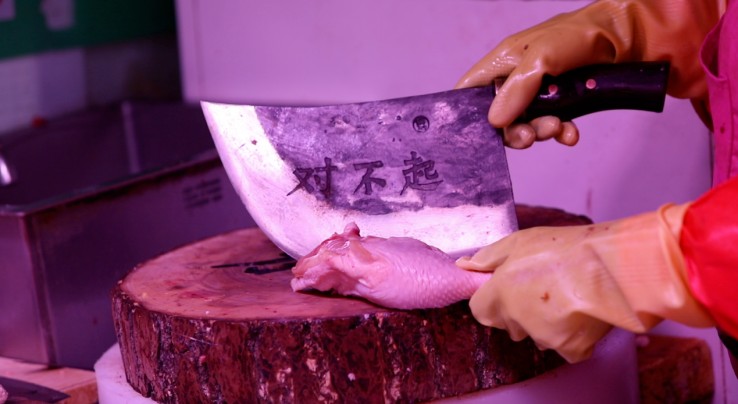
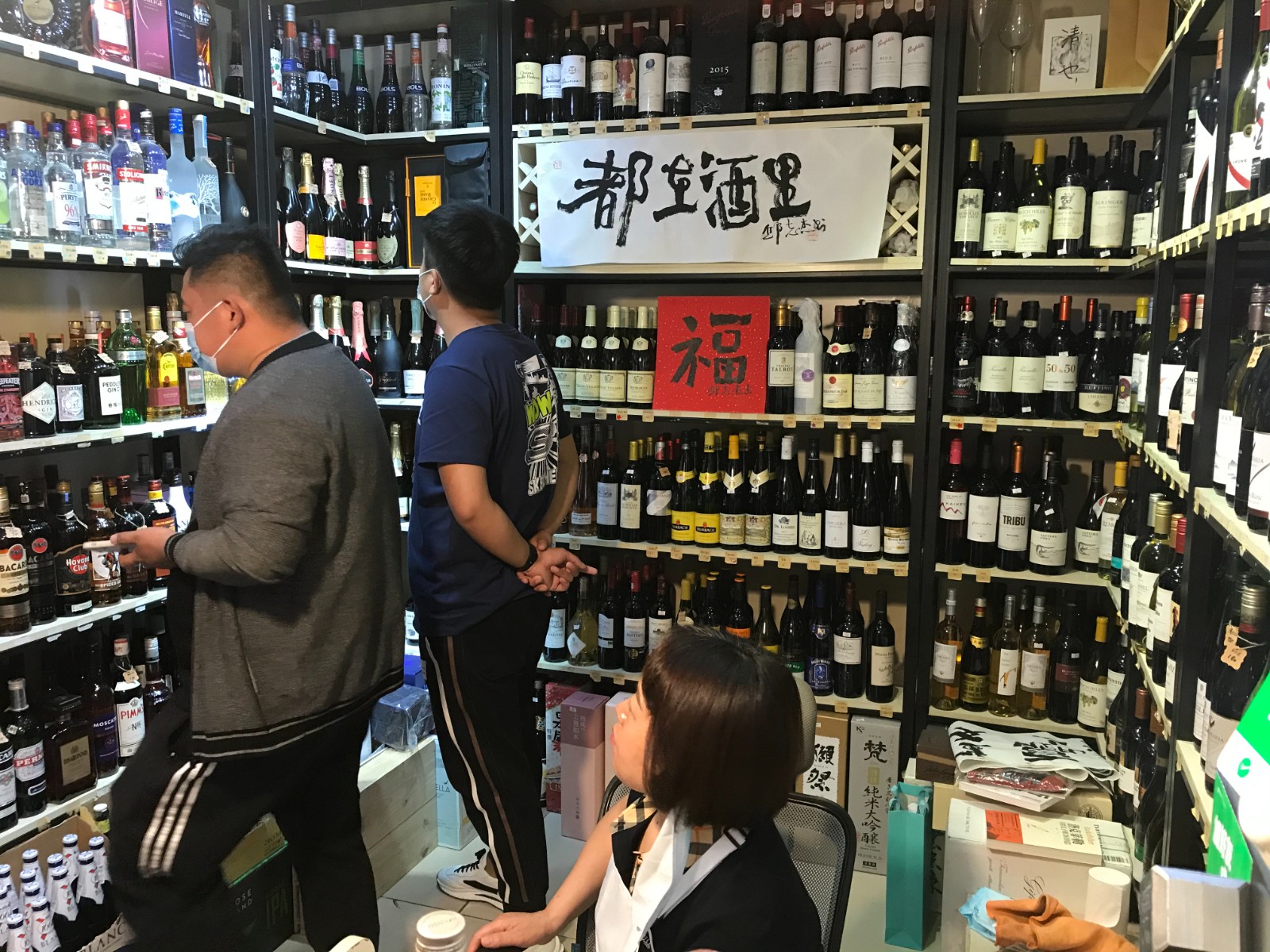
Exhibition View of “For People, Food is the First Necessity: Qiu Zhijie’s Writing in a Market”
CAFA ART INFO: What do you think of “an exhibition attracts influencers”?
Qiu Zhijie: I do not dislike it but I object to the rigid and simple behaviour of “influencers”. What’s more important, what do you have to do to become an “influencer”? Except for some extremely radical exhibitions that take place in the relatively small circles for personal observation only, most public exhibitions are expected to expand through public influence and acceptance as wide as possible. The responsibility of a curator naturally includes the promotion of the exhibition, and even the actual mission of promotion. This is also the content that will be involved in the curatorial teaching process, and includes the planning of media events.
However, a large number of exhibitions that have currently attracted influencers, reflect a limited rigid imagination of social influence. They have underestimated the comprehensive ability and even cultural degree of a young audience. There is a stereotype now where they basically believe that the cartoonish images, awesome videos of immersive experience, optical illusions, mirror houses, and interviews with one or two online celebrities with a huge fan base, jointly constitute the standard content of “an exhibition with internet influence.” Someone even suggested that I should create a Rap song with my intellectual speech, which scared me to death!
My art event of “For People, Food is the First Necessity” became so popular that it proved that there are other ways and factors for “an exhibition with internet influence”: it should be close to life, conscientious and unique, and it is unnecessary to follow the mainstream but should open up its own space.
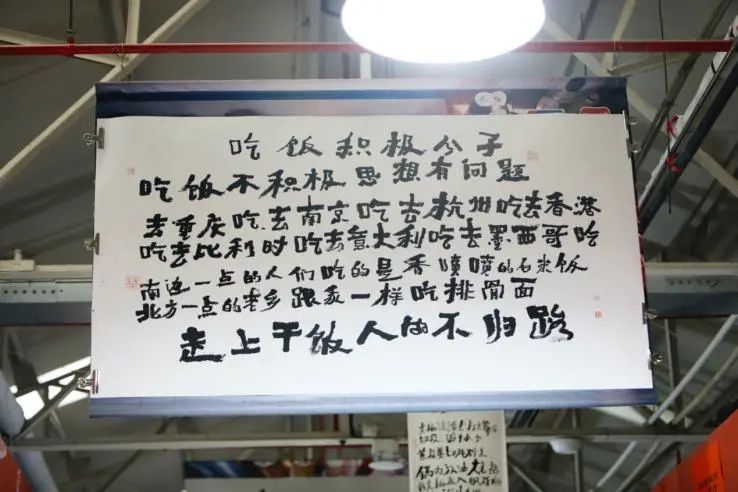
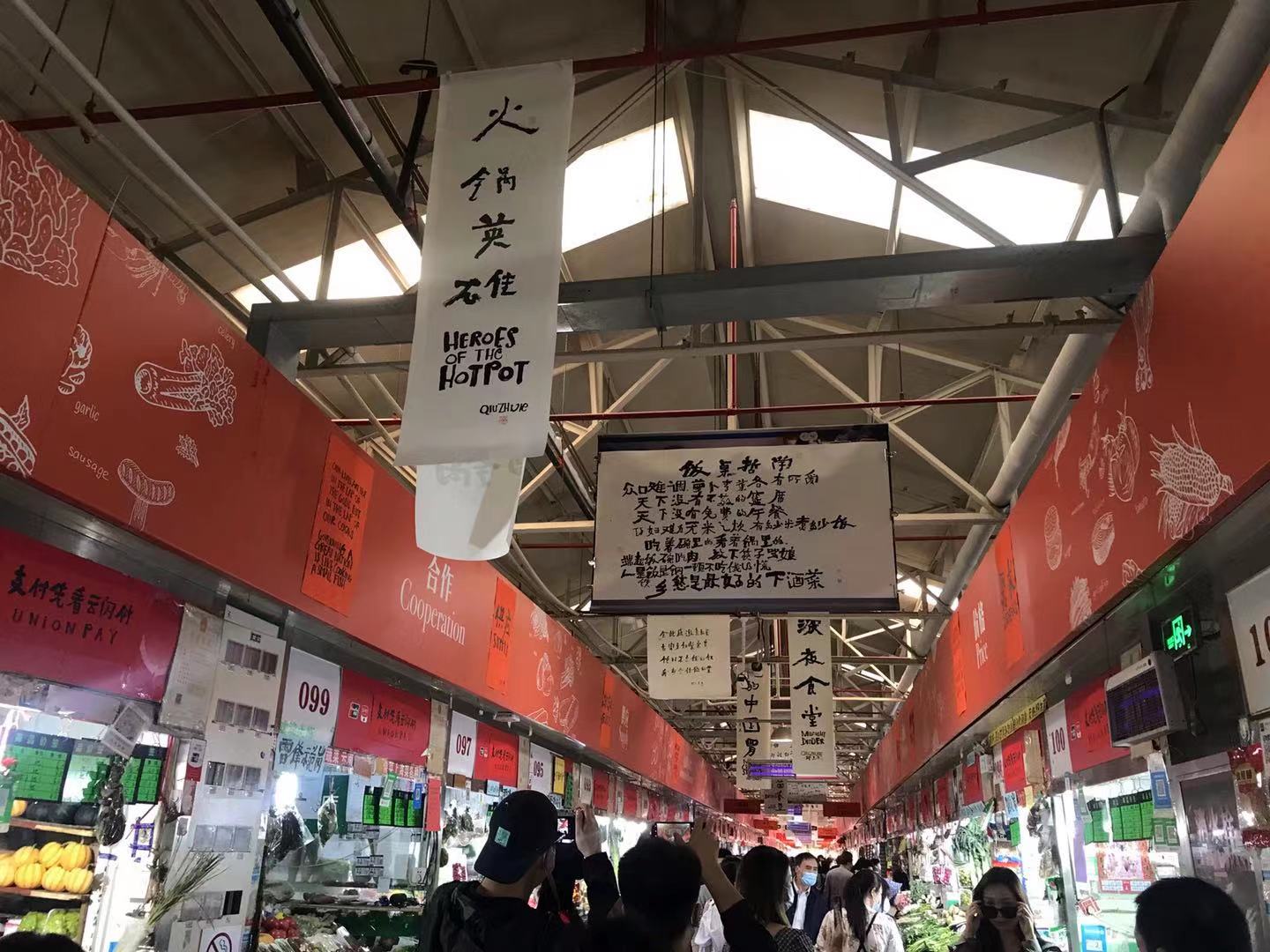

Exhibition View of “For People, Food is the First Necessity: Qiu Zhijie’s Writing in a Market”
CAFA ART INFO: You have always advocated calligraphy and your frank “strong opinion” on art seems to have fermented more controversy from this exhibition. What do you want to clarify or talk about here?
Qiu Zhijie: I am very concerned with the influence of the exhibition on Chinese calligraphy. Generally speaking, both the national exhibition of calligraphy and exhibitions that are presented by various calligraphy societies, have greatly improved the innovation of calligraphy. It’s just that the form of exhibition encloses calligraphy to a certain extent, thus we have to detect a certain deficiency that might arise.
Many of my friends are freelance calligraphers, and I admire their works in the national exhibitions of calligraphy. I am usually pretty occupied with work, thus I cannot imitate calligraphy and I am envious of my calligrapher friends. I call myself a “calligraphy fundamentalist”, and actually I completely support the teaching of calligraphy by the Calligrapher Association, the National Book Fair, as well as the departments of calligraphy at various art colleges. What I dislike are some attempts that they try to blend contemporary art with calligraphy. Calligraphy should not be reduced to a category of contemporary art, but contemporary art should evolve into calligraphy.
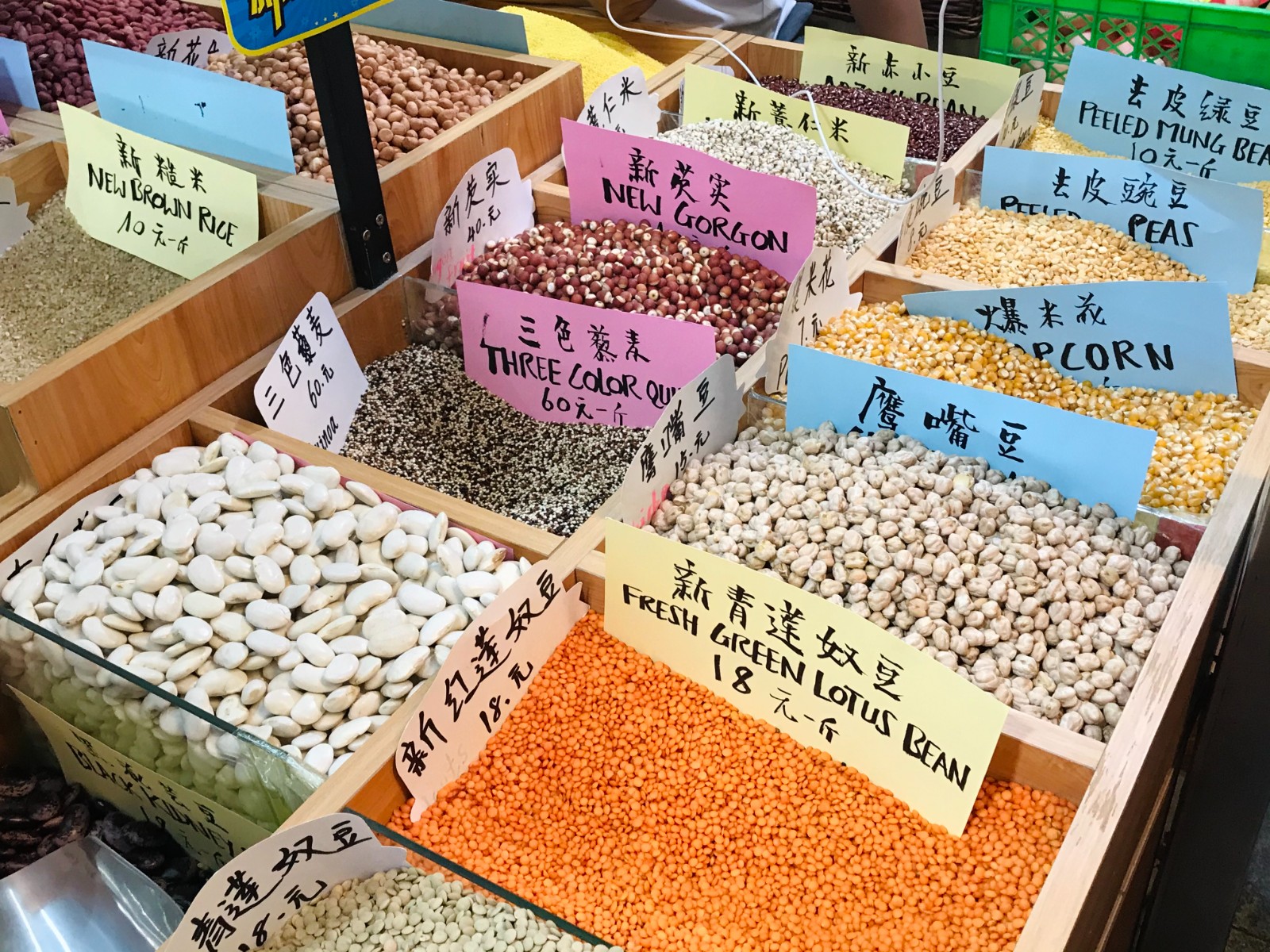



Exhibition View of “For People, Food is the First Necessity: Qiu Zhijie’s Writing in a Market”
In 1964, when Pan Tianshou set up the discipline of calligraphy at the Zhejiang Academy of Fine Arts (later China Academy of Art), I thought it was a great event of immense merit. Calligraphy has been incorporated into the education system of modern universities since then. The Central Academy of Fine Arts, China Academy of Art, Capital Normal University and other colleges have started to have a complete and wonderful modern teaching system in calligraphy. This was unprecedented in the history of calligraphy education, and it has caused the unparalleled prosperity of calligraphy education, which has been greatly improved over time. Currently, there are probably few people who can learn calligraphy like I experienced at a temple during my childhood.
The current conditions for learning calligraphy are unprecedentedly excellent, as there are so many calligraphy courses on Art CCTV and on the internet, people who live in remote regions can also learn calligraphy through expert lectures. Currently, there are inscription resources that are high-quality and of high resolution on the internet. When I found the apps that were integrated into the calligraphy dictionary with rubbings from stone inscriptions, I was shocked. Currently, the printing techniques are so advanced that all calligraphy learners can enjoy the conditions that were previously owned by an emperor.
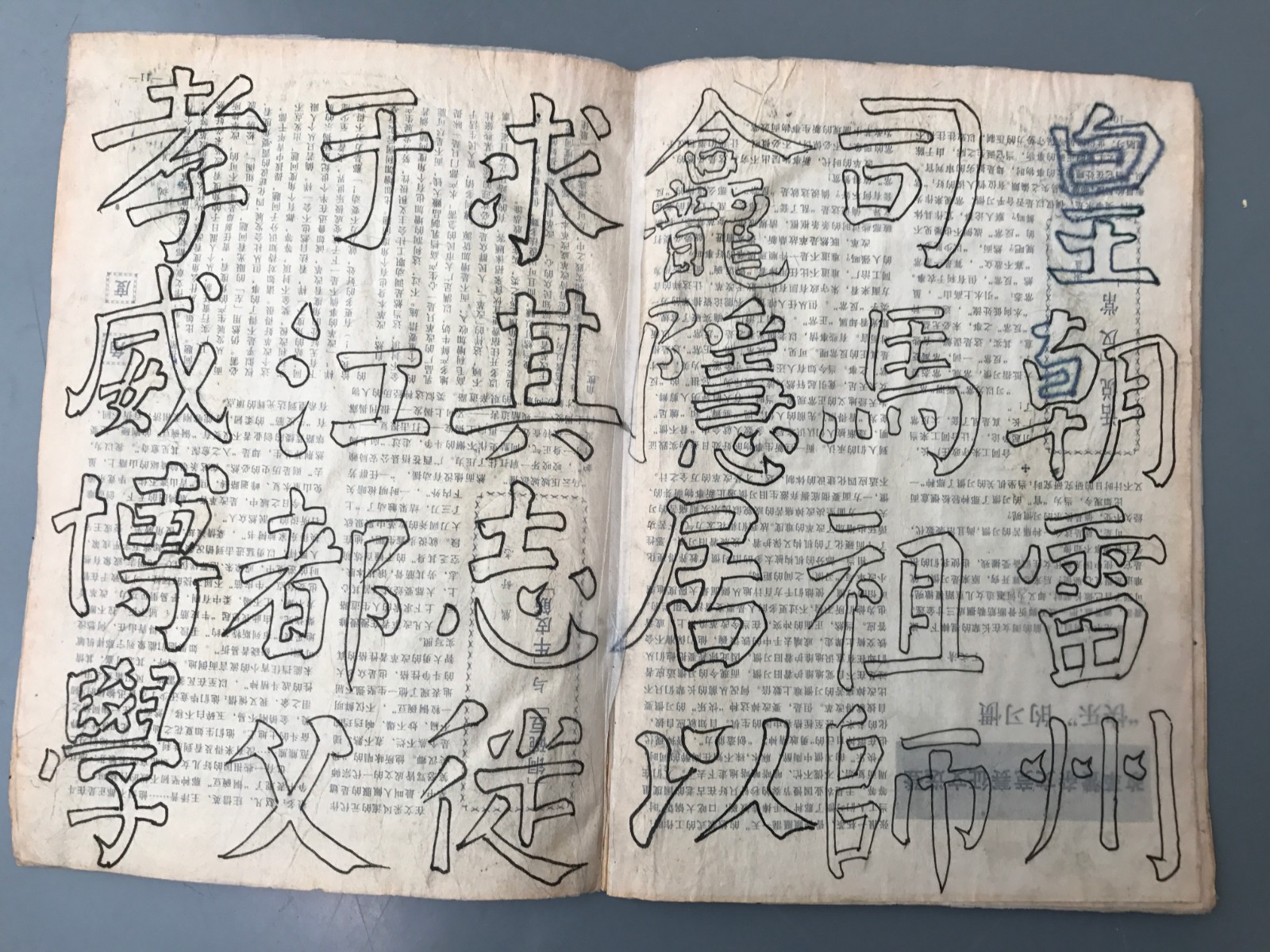
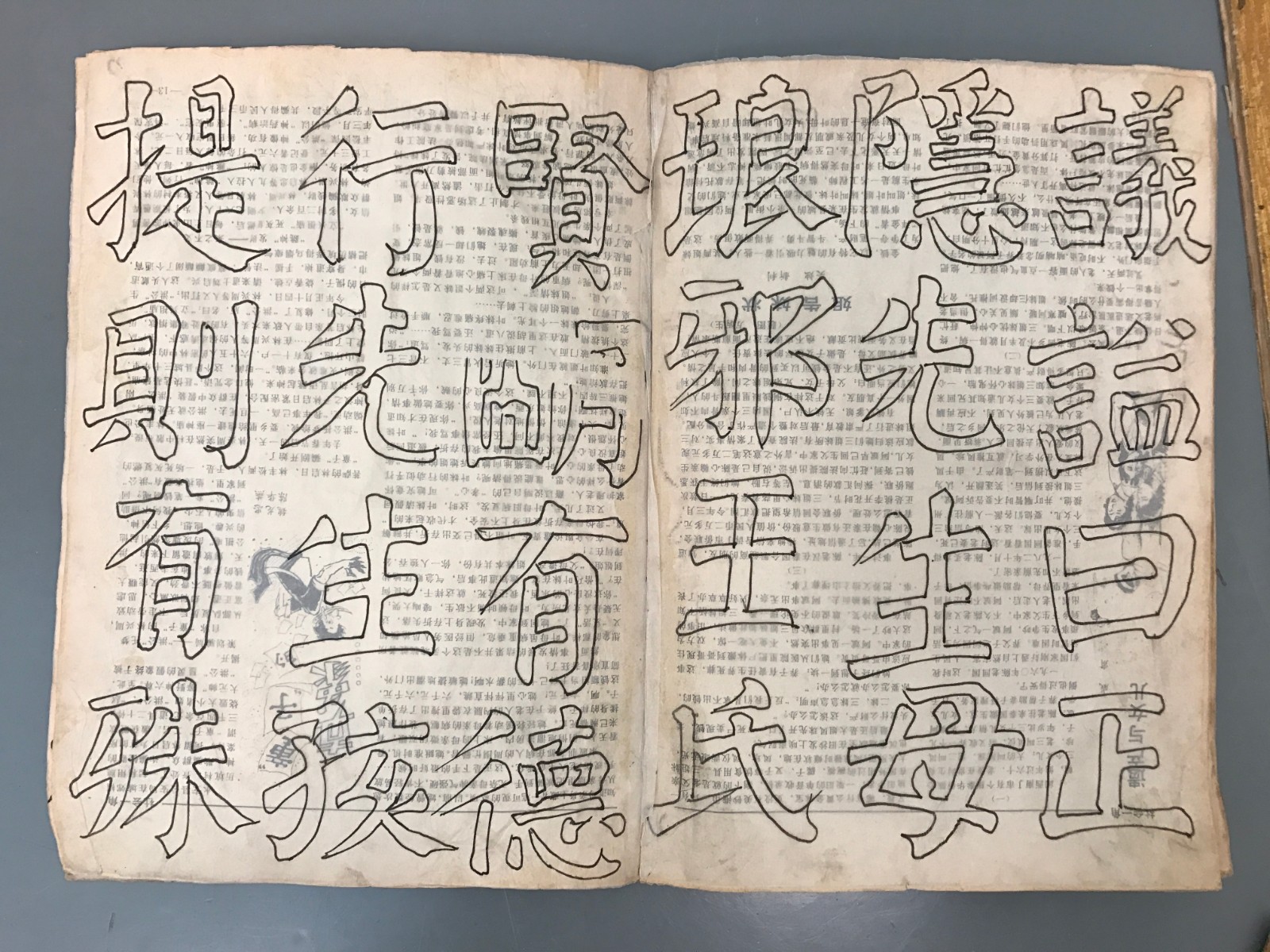

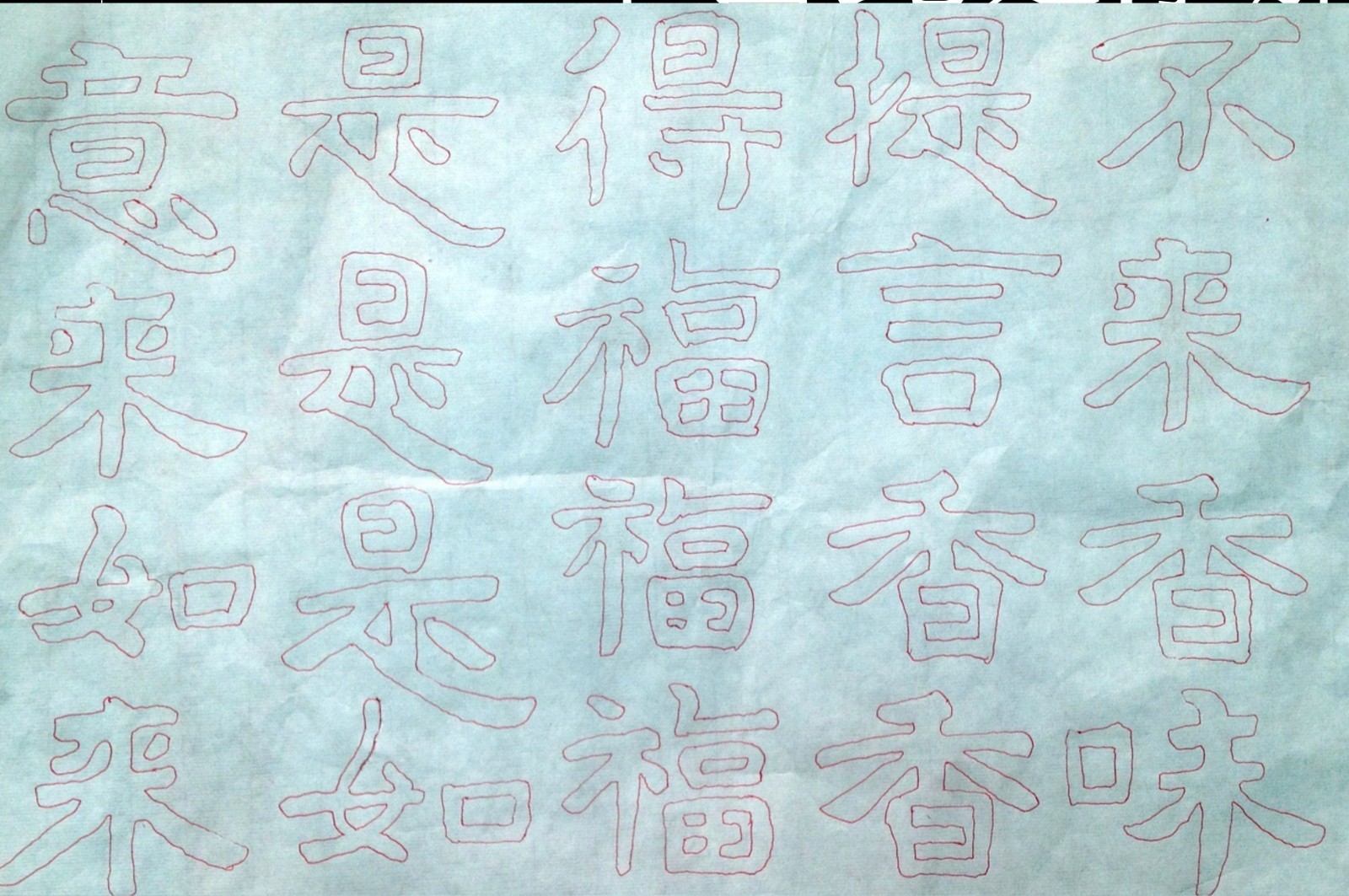
The Calligraphy Copybooks of Shuanggou That Qiu Zhijie Used in Junior High School
Compared with good learning conditions, calligraphy is gradually being withdrawn from our daily life. It was constrained by pens, ballpoint pens, and by the use of a keyboard and also by voice input. Regarding the style of presentation, screens have largely replaced paper, while standardized fine art characters and computer fonts have completely replaced personalized writing, which is a major shift for all calligraphy learners who have been confronted with this during a millennium. In this sense, people who are marginalized like me and freelance calligraphers are actually confronted with this common enemy. We should conduct our “fight of trapped beasts” from multiple perspectives, and strive to be persistent in our great writing tradition.
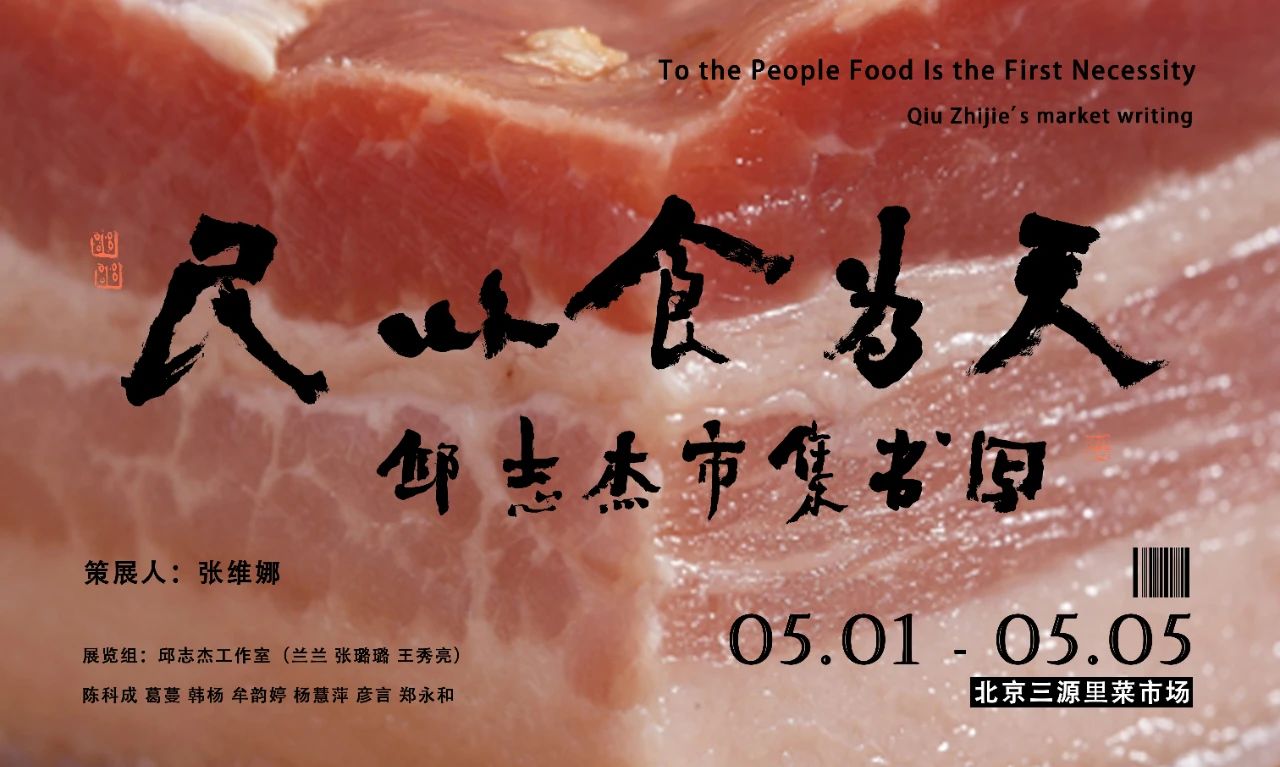
Although “For People, Food is the First Necessity” did not seem to cater to the so-called “professional audience” if compared with the Art Beijing, it does not mind showcasing calligraphy to a more “amateur” and extensive public. This does not mean that there’s any derogatory meaning, but it shares a common direction with the connotation of “For People, Food is the First Necessity”. This attribute is closely related to the artistic concept that is advocated by the artist, as Qiu Zhijie believes, “Even today, calligraphy still has some nature of ‘a(chǎn)mateurism’...This kind of amateurism and practicality does not reflect the disadvantage of calligraphy, but rather the authentic advantage of traditional Chinese calligraphy. It is precisely because writing is such a skill that people need to use it in daily life, it’s a basic skill like riding a horse, driving, mathematics, and shooting arrows.” 1
It is precisely based on the art opinion of the artist, the choice of venue at the vegetable market is inherently related to the expression of the exhibition. Through “an unusual exhibition” that emphasizes action and intervention, the artist has tried to interpret his comprehension and advocacy of calligraphy in a straight forward, game-like, and energetic way and it bursts out the inherent vitality of writing through the actions of an enthusiastic daily life.
1. Quoted from “Sanyuanli: Why Calligraphy Works Are Hung in the Vegetable Market”, Qiu Zhijie’s Preface for the exhibition “For People, Food is the First Necessity” .
Text by Mengxi, edited and translated by Sue/CAFA ART INFO




























